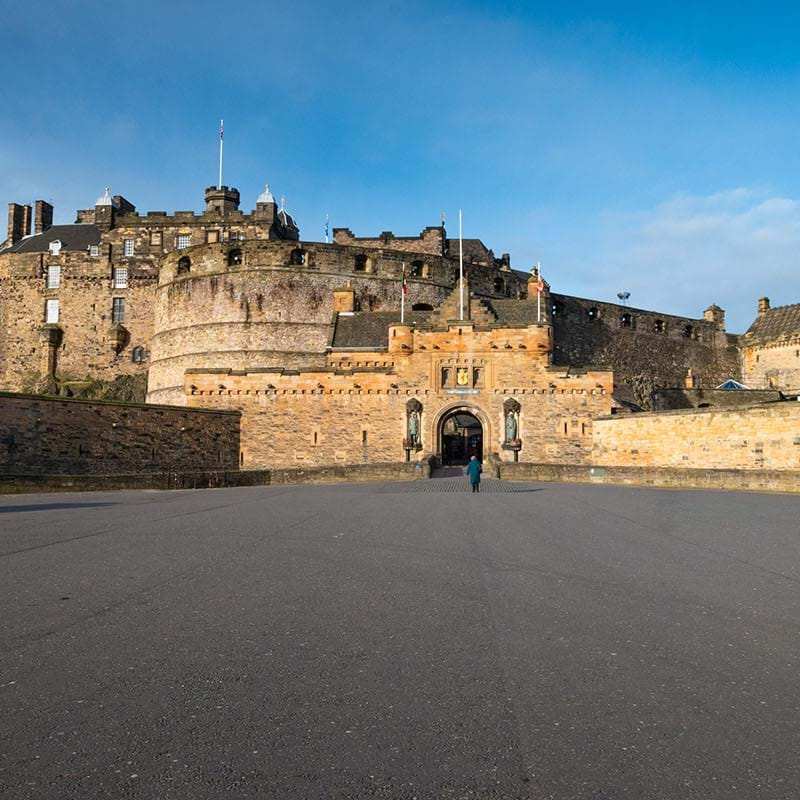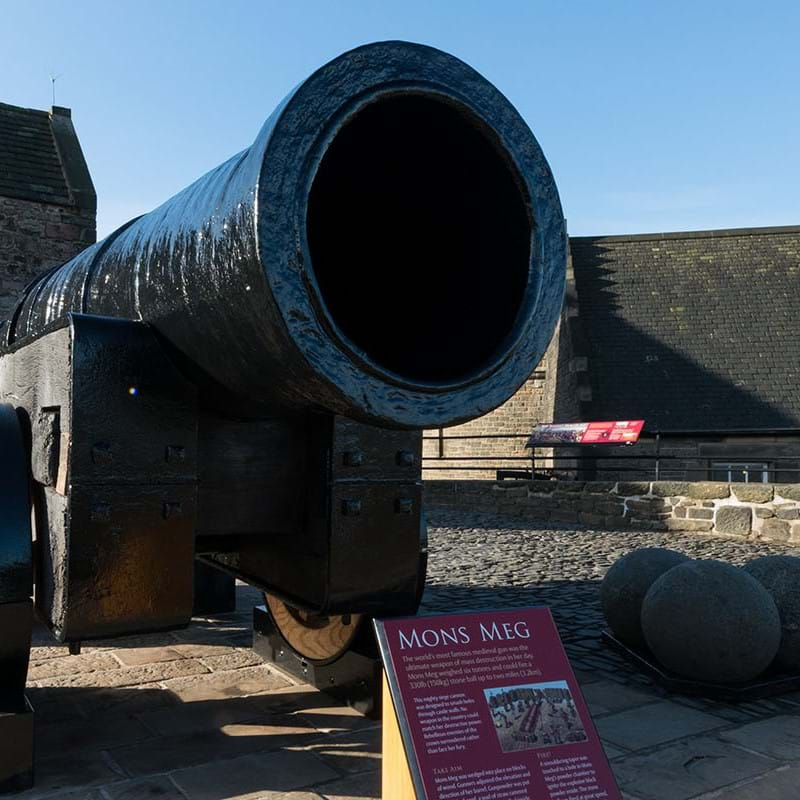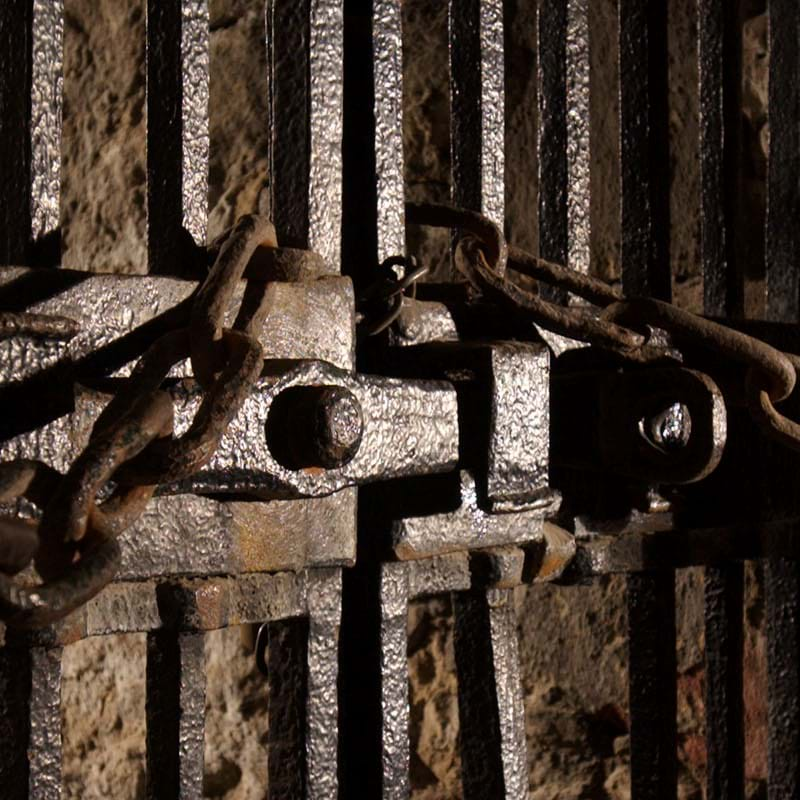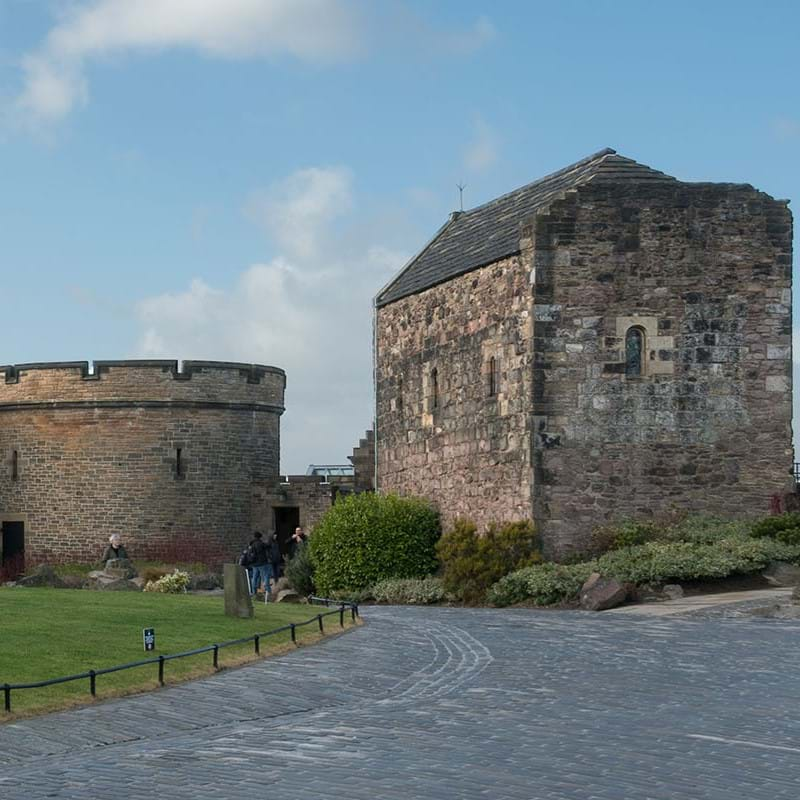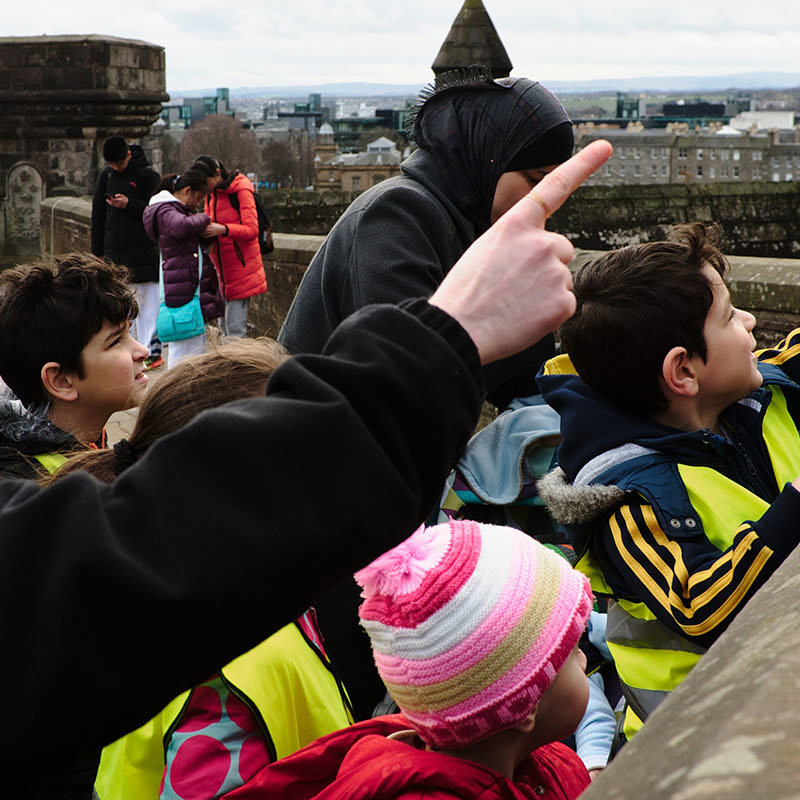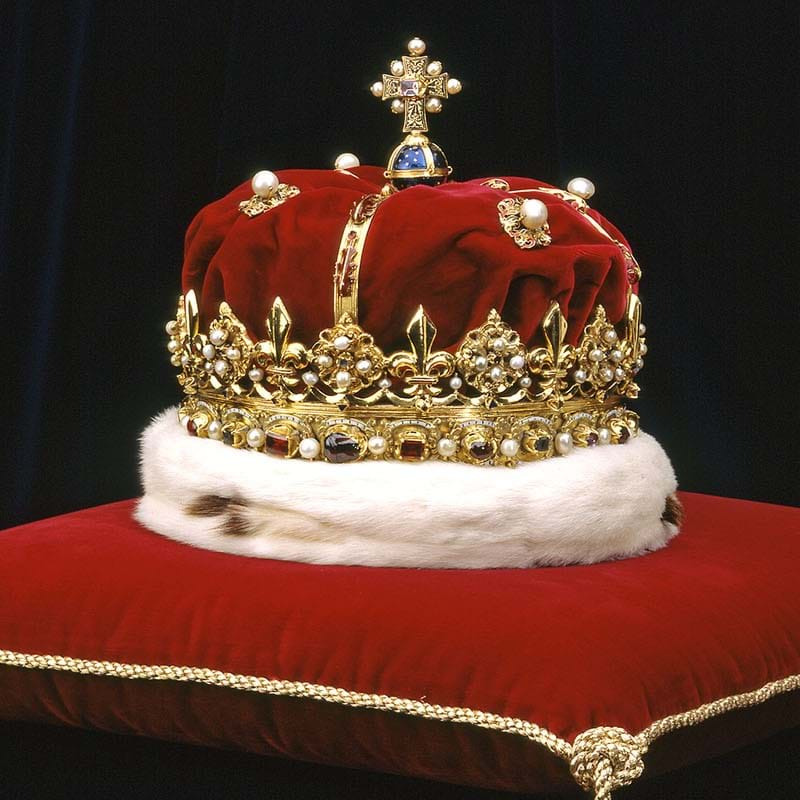
Royal Route
Walk in the footsteps of kings and queens to see for yourself why so many royals sought out the safety – and comfort – of this Scottish stronghold.
1.5 hours
-
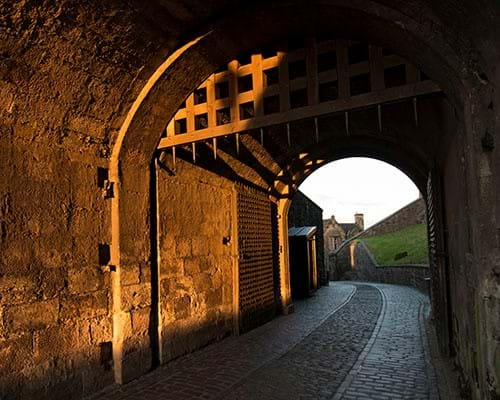
Portcullis Gate
Pass beneath the spikes of a raised portcullis. This fortified gateway was built almost 450 years ago in the wake of the devastating Lang Siege. Three sets of heavy wooden doors once sat alongside the iron gate to ward off intruders. The top floor – Argyle Tower – was added in the 1880s. Look for the lions, a symbol of royalty.
-
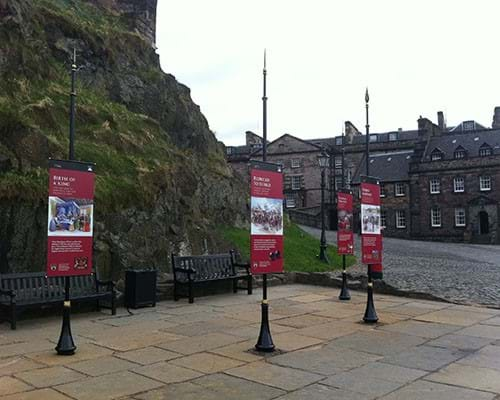
Castle Timeline
Get a lively overview of the castle’s history in nine illustrated panels. Earlier moments of note include King David’s national assembly and the recapture of the castle by the nephew of King Robert the Bruce. Later stories tell of the birth of King James VI and Bonnie Prince Charlie’s siege.
-
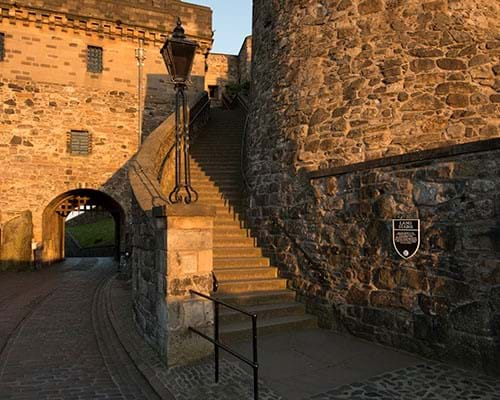
Lang Stairs
Count all 70 steps on the most direct route to the summit of the Castle Rock. This great flight of stairs once formed the original entrance to the castle. The gentler alternative route that winds up and around the cobbled hill was created in the 1600s for moving heavy guns.
-
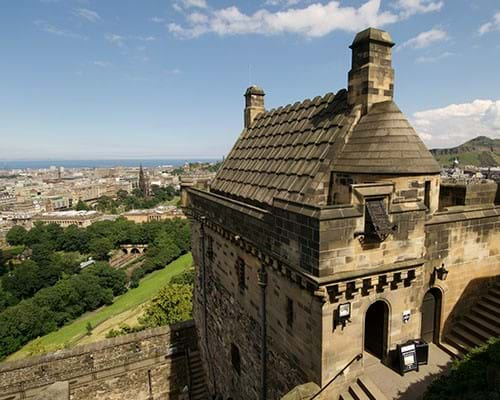
Fight for the Castle - Argyle Tower
The Argyle Tower (which shows the exhibition) is currently closed. Telling the story of Edinburgh Castle in the Wars of Independence, this exhibition uses animations, projections and medieval objects found here to bring this dramatic episode in the stronghold’s heritage to life. The vaulted chamber is dominated by a huge model trebuchet that towers above a stone ball believed to have been fired at the castle during the siege of 1296, the first time such giant catapults are recorded as being used in Scotland. The exhibition sits directly above the gateway that was the focus of a daring attack at the end of the siege of 1341.
-
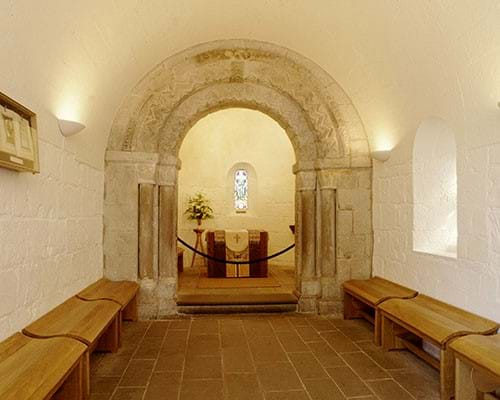
St Margaret's Chapel
Step inside the oldest building in Edinburgh. King David I had this tiny chapel built around 1130 in memory of his mother. For a time, it was the only part of the castle left standing. The chapel’s plain exterior belies the beauty within: look for the ornate original arches and stained glass windows from the 1920s.
-
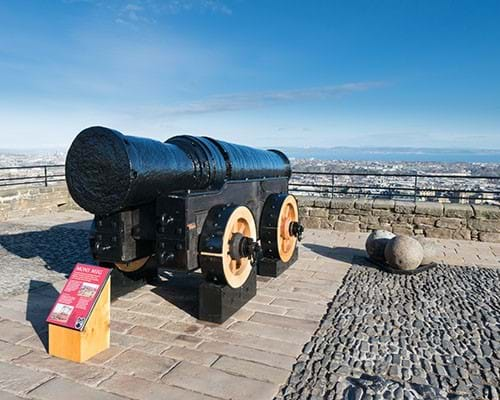
Mons Meg
Stare down the barrel of this six-tonne siege gun and imagine its awesome power. Given to King James II in 1457, Mons Meg could fire a 150kg gunstone for up to 3.2km (2 miles). One fired over the city to celebrate the marriage of Mary Queen of Scots landed in what is now the Royal Botanic Garden.
-
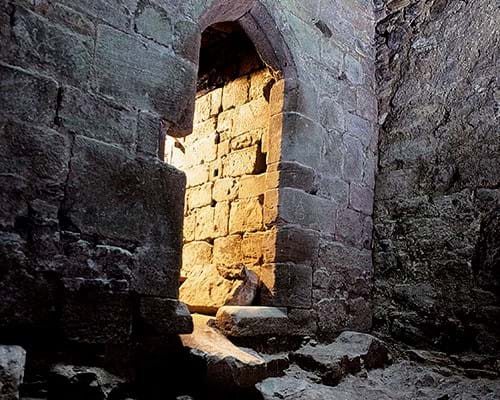
David's Tower
Descend below the Half Moon Battery to see the remains of what had been the heart of the castle in the late 1300s. Though King David II died before his colossal tower was complete, it served as the royal residence for nearly 100 years. Destroyed in the Lang Siege, only atmospheric ruins survive today.
-
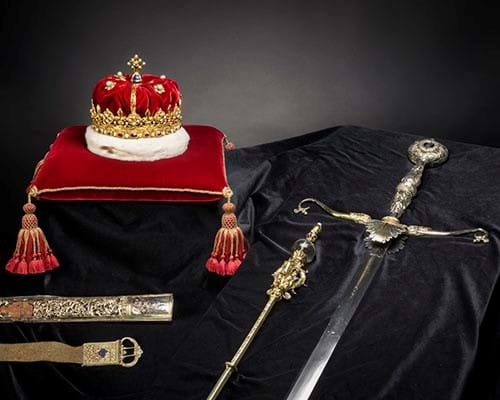
Honours of Scotland
Be dazzled by the oldest Crown jewels in the British Isles, first used together for the coronation of Mary Queen of Scots in 1543. Where the priceless crown, sceptre and sword of state were kept before the Crown Room was built is a mystery.
-
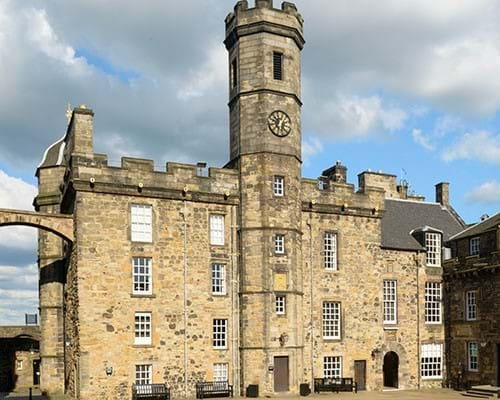
The Royal Palace
See where monarchs stayed when they sought the safety of this mighty stronghold. Above the entrance, spot the gilded initials MAH – for Mary Queen of Scots and her second husband Henry Stewart, Lord Darnley. Inside, find the fine fireplaces from the 1400s and the beautifully restored Laich Hall.
-
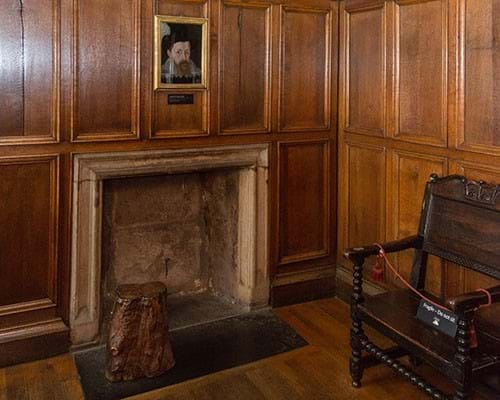
James VI Birth Chamber
Mary Queen of Scots chose the safety of the castle over the comfort of Holyroodhouse for the birth of James VI in 1566. Enter the little room where the future king, first monarch of both Scotland and England, was born. The décor is just as it was for his return to the castle in 1617 to celebrate his golden jubilee.
-
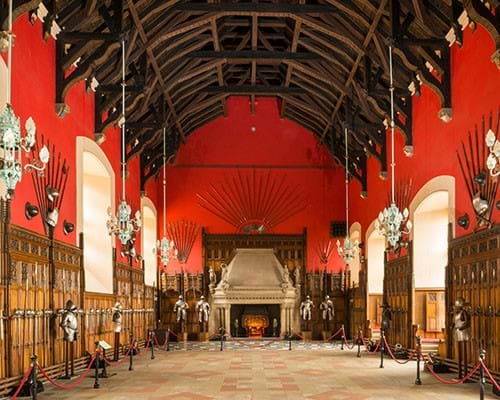
The Great Hall
Gaze up at the original hammerbeam roof and carved stone corbels of the impressive hall where King James IV held state ceremonies. Completed in 1511, the Great Hall was restored to its former glory in the 1880s – though its roof was left untouched. A remarkable collection of weapons and armour is on display.
